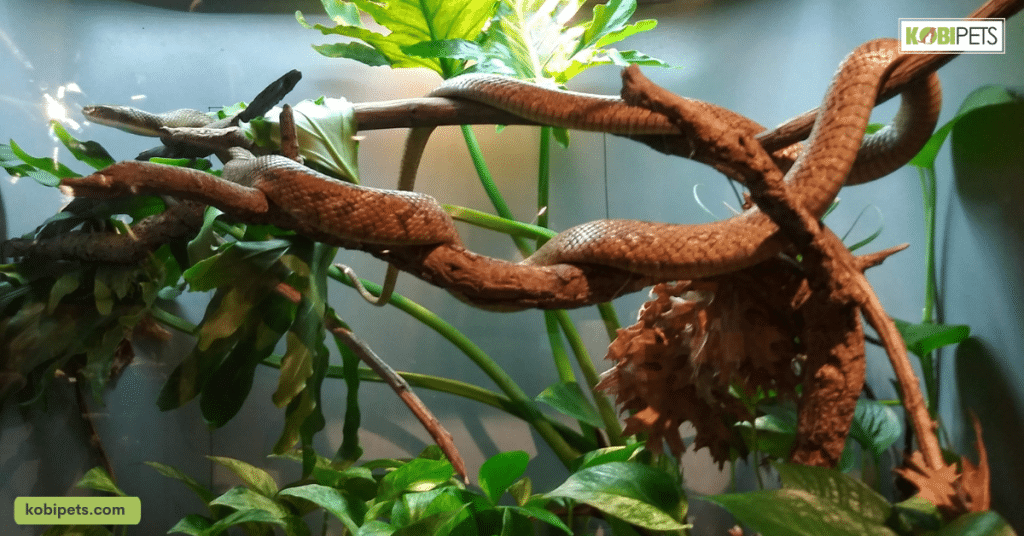
Creating the perfect habitat for your reptilian friend starts with selecting the right terrarium size and shape to suit their needs. Ensure proper temperature, humidity, and lighting conditions to mimic their natural environment. Finally, add a variety of hiding spots, substrates, and decorations to create a comfortable and stimulating environment for your scaly companion.
Salutations to our guide on creating the perfect habitat for your pet reptile! We’ll delve into essential terrarium design and care, underlining its vital role in your reptilian friend’s health and well-being. Given the diversity of reptile species, each with its unique requirements, we’ll assist you in offering specialized care customized to your needs. Join us in fashioning the ideal environment for your cold-blooded companions.
1. Research Your Reptile’s Specific Needs
Conducting thorough research on your reptile’s species is the foundational step in providing proper care. You’ll need to explore the intricacies of their natural habitat, understand their temperature and humidity preferences, grasp their dietary requirements, observe their social behavior tendencies, and be aware of any species-specific health concerns.
This in-depth knowledge forms the basis for creating a customized terrarium habitat that caters to your reptilian friend’s unique needs, ensuring their well-being and happiness.

2. Choose the Right Terrarium Size
Selecting the appropriate terrarium size is a pivotal decision with profound implications for your reptile’s overall health and quality of life. It’s essential that the enclosure not only accommodates your reptile’s current size but also accounts for its potential growth.
A spacious terrarium facilitates natural behaviors like exploration and exercise, replicates their native environment, and provides room for essential features like basking and hiding spots. However, striking a balance is crucial to prevent excessively large enclosures, which can hinder temperature and humidity regulation and create an environment that’s challenging to manage effectively.

3. Provide Proper Heating and Lighting
Since reptiles are ectothermic, they depend on external heat sources to maintain their body temperature. The provision of suitable heating elements, such as heat lamps, heat mats, or ceramic heaters, tailored to your reptile’s specific needs is paramount.
Monitoring and creating a temperature gradient within the terrarium, with warm and cool zones, is essential to mimic their natural habitat. Adequate lighting, including UVB for species that require it, helps with vitamin D synthesis and calcium metabolism, and simulating a proper day-night cycle is vital for overall health and well-being.

4. Create a Substrate Layer
The substrate layer within the terrarium serves multiple functions, from providing a comfortable surface for your reptile to facilitating natural behaviors. Carefully choosing the right substrate for your reptile’s species and habitat is crucial.
For desert-dwelling reptiles, options like fine sand mixes may be appropriate, while forest-dwelling species may thrive on coconut coir or cypress mulch. The substrate should support burrowing, nesting, and moisture retention while being safe for ingestion, ensuring your reptile can live comfortably and securely within its enclosure.

5. Establish a Suitable Temperature Gradient
Reptiles rely on the ability to control their body temperature by moving between warmer and cooler areas within their enclosure. To achieve this, it’s imperative to create a temperature gradient. Typically, this is done by providing a hot spot at one end of the terrarium, often through a basking lamp or heat source, and a cooler area at the opposite end.
The key is precision, using accurate thermometers and thermostats to maintain the desired temperature range. This thermal gradient enables your reptile to move to the appropriate zone to regulate its body temperature effectively, ensuring its physiological processes function optimally.

6. Monitor and Maintain Humidity
Humidity levels are a critical aspect of reptile care, impacting hydration, respiratory health, and the shedding process. Different reptile species have varying humidity requirements, with tropical species needing higher humidity and desert dwellers requiring lower levels.
To ensure proper humidity, it’s essential to monitor it consistently using a hygrometer. Regular misting of the enclosure or providing a humid hide filled with damp substrate can help maintain the ideal humidity levels for your reptile’s species, ensuring they remain comfortable and healthy.

7. Provide Hiding Places and Enrichment
A thriving reptile habitat goes beyond just the physical necessities; it also addresses the mental and emotional well-being of your pet. Reptiles benefit greatly from mental and physical stimulation within their terrariums. To achieve this, furnish the enclosure with a variety of hiding spots, caves, branches, rocks, and other decorative elements.
These additions serve multiple purposes: they create a sense of security, encourage exploration and exercise, and provide opportunities for climbing and basking. To keep your reptile engaged, consider periodically rearranging or introducing new items to stimulate their curiosity and keep their environment interesting.

8. Maintain a Clean Environment
A clean terrarium is crucial for your reptile’s health and overall well-being. Regular maintenance involves several key tasks, including the prompt removal of uneaten food, feces, and shed skin to prevent the growth of harmful bacteria and to minimize odors. The frequency of substrate replacement should be determined based on your reptile’s species and the cleanliness of the enclosure.
It’s vital to keep the water dish clean and replenish it with fresh water daily to prevent contamination and ensure your pet always has access to clean drinking water. This commitment to cleanliness helps prevent health issues and ensures your reptile enjoys a comfortable and sanitary living environment.

In conclusion
Creating the perfect terrarium habitat for your reptilian friend is a rewarding endeavor that requires careful consideration and attention to detail. By researching your reptile’s specific needs, selecting the right terrarium size, providing proper heating and lighting, choosing an appropriate substrate, establishing a temperature gradient, monitoring and maintaining humidity, offering hiding places and enrichment, and maintaining a clean environment, you can ensure your pet’s health and happiness.






